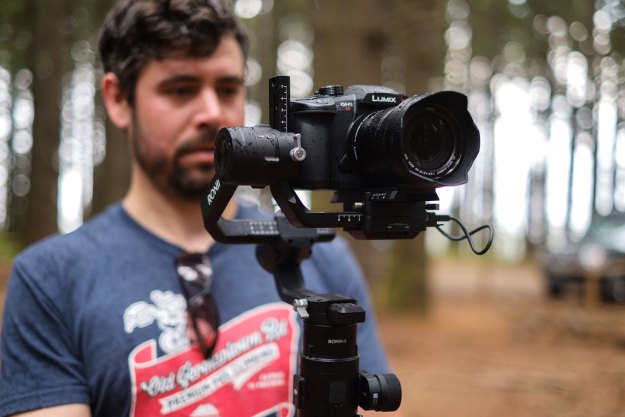A Kickstarter project is aiming to give smartphones three-axis image stabilization along with a handful of physical controls. The Vimbal S is a motorized smartphone gimbal, but in addition to capabilities like stabilizing footage and following faces, the gimbal also puts camera controls off the touchscreen.
Launching on Kickstarter today, the Vimbal S stabilizes smartphone video, preventing movement from three directions to allow for smooth footage while in motion, or to minimize vibrations when holding a phone.
The gimbal’s motor, paired with the Vimbal app, gives the smartphone accessory a number of different features, including the ability to follow faces. In the face tracking mode, the camera will recognize a face, and keep that person in the frame, following their movement on the motorized 360 degree rotating base. The developers say the feature works both when the accessory is used handheld or when freestanding, making it possible to record a video selfie without standing in the same place.
The Vimbal S, developed by the Hong Kong-based DelTron Technology, also uses the motor to automatically shoot 180-degree panoramas. The app also includes a time-lapse mode, as well as live shooting capabilities.
Outside of the stabilization and automated features, the Vimbal S puts several controls inside the gimbal’s grip. Without using the touchscreen, exposure, zoom, focus, and white balance are all adjustable using the handle’s built-in controls. The function button at the top-back of the handle adjusts the various settings while a shutter button sits at the front. Above that, a joystick controls the gimbal’s motor for composition .
“This isn’t just some fancy selfie stick, the technology we’ve implemented into the Vimble S sets your photo and video content apart from the mundane,” said DelTron Technology Founder and CEO, Rian Cheng. “Vloggers, extreme sports enthusiasts, travelers, or anybody else can use features such as our intelligent face tracking to breathe new life to their videos.”
The Vimbal S has an eight-hour battery life and a super quiet motor, the company said. The ergonomic handle is also designed to stand on its own as a mini monopod.
The adjustable mount accommodates a number of different smartphones, including iPhone, Huawei P9 and P9 Plus, Google Pixel, Samsung Galaxy, and others with similar dimensions. Bluetooth enables the gimbal to communicate with the phone. The device itself folds down to about 11.2 inches.
The Vimbal S is available for pledges beginning at $179, provided the crowd funding campaign successfully reaches its goal. The S is an upgrade over the company’s previous Vimbal X, which did not offer live streaming or time-lapse support.
Editors' Recommendations
- The best smartphone case brands in 2023: the 20 best ones
- This tiny sensor is about to change your phone camera forever
- What is vapor cooling? The fascinating tech keeping your smartphone cool
- I hate that the best cameras can only be found in the biggest smartphones
- The DJI OM 4 is a smartphone gimbal with drone-like tracking




